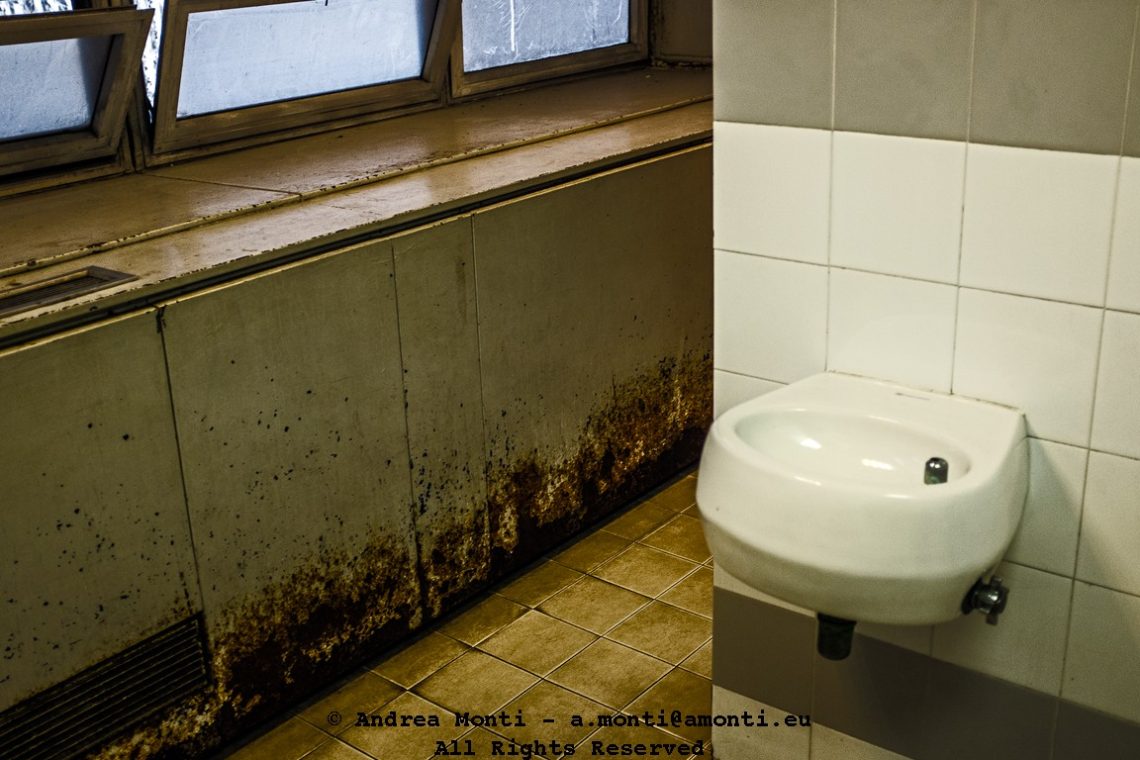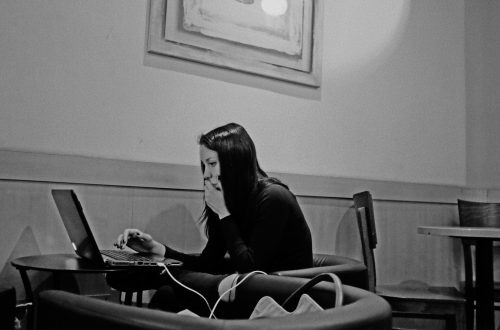
A Toilet of the Court of Rome
This image wasn’t taken to shock, or to moralise. It was taken to document—to observe the banal degradation of a public space that ought to represent dignity, order, and functionality. The Court of Rome is not some anonymous bureaucratic annex. It’s an institution, a symbol of authority. And this—this corner of neglect, dirt, and rust—is part of its daily mise en scène.
The frame is unadorned. The composition is split by a hard vertical: clean white tiles with a wall-mounted sink on the right, and a long, filth-streaked heating unit under sealed windows on the left. It’s the juxtaposition that struck me—two realities in the same room. One part designed for hygiene, the other abandoned to decay.
I exposed for the middle tones, wanting to retain the subtle shifts in the grime without pushing the highlights on the tiles into pure white. There’s no dramatic contrast here—just flat, institutional lighting that reveals rather than conceals. Texture carries the image: the rust creeping up from the floor, the build-up on the metal panels, the slight reflection on the porcelain basin.
Technically, the shot is simple—handheld, natural light, no filters. But the simplicity is what makes it hard. There’s nowhere to hide. Every element in the frame serves one purpose: to show what we usually look away from.
This photo isn’t aesthetically pleasing. It isn’t meant to be. But it is honest. It’s a visual record of bureaucratic entropy, of maintenance budgets postponed, of dignity eroded one corner at a time.
We often expect grandeur from institutions of justice. But sometimes the truth is under a flickering light, next to a sink, behind a half-broken window.




